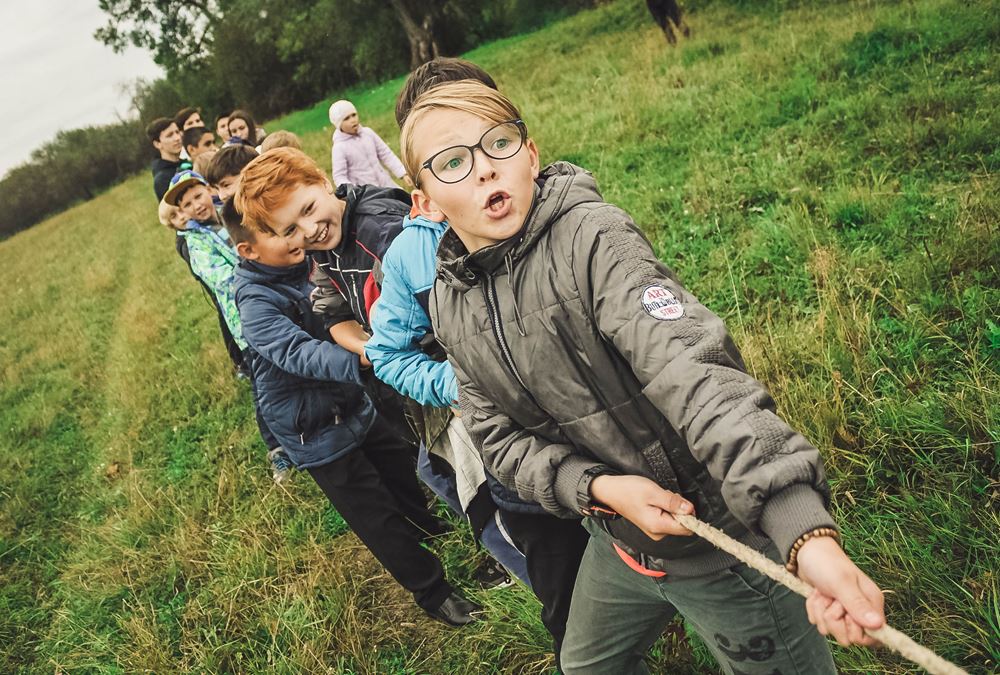- Home
- Business Processes
- Industry Knowledge
- Aerospace Industry
- Automotive Industry
- Banking Domain
- BFSI Industry
- Consumer/ FMCG Industry
- Chemicals Industry
- Engineering & Construction
- Energy Industry
- Education Domain
- Finance Domain
- Hospitality Domain
- Healthcare Industry
- Insurance Domain
- Retail Industry
- Travel and Tourism Domain
- Telecom Industry
- Leadership Skills
- eLearning
- Home
- Leadership
- Problem Solving
- Storming Stage of Team Development
Storming Stage of Team Development
Storming is the second stage of team development and this stage is characterized by a bid for power and inter-personal conflicts. Learn the key factors that occur in the storming stage and the strategies that a team leader can adopt to pass this stage of high winds
Managing Team Conflicts in the Storming Stage
Storming is the second stage of team development and in this stage, members start competing for status, leadership, and control in the group. When group members get to know each other better, the storming stage begins. This stage is characterized by a bid for power. Every team will move through this phase. Some will stay here longer than others. During the Storming stage, conflicts arise as team members try to figure out their roles and delegate tasks. This stage can be difficult, but it can also be highly productive.
Characteristics of the Storming Stage:
Key factors that occur in the storming stage for the team members might include:
- Individuals understand others' behavior and assert their role in the group.
- Team members may compete for a certain role or position on the team.
- The leader’s authority may be challenged as others compete for the position.
- As a result inter-personal conflict starts.
- Members try to resolve the issues related to the task and working relations.
- They also resolve the issues related to the role of the individual in the group.
- Roles and responsibilities get clarified to a certain extent.
- The rules and ways of working as a team start to be defined.
- The team still lacks established processes.
- The team lacks strong interrelationships with their colleagues.
- Some members may feel overwhelmed by how much there is to do.
- Some members may also feel uncomfortable with the approach being used.
- Some may even start questioning the appropriateness of the goals of the team.
- Some may start resisting taking on tasks.
- Members will begin to open up but also confront each other on ideas.
- Can be painful to team members who are reluctant to deal with conflict.
- Politeness tends to begin to wear off and dissension can occur over.
- Control often becomes the primary issue.
- Disagreements can be either very obvious or subtle.
- Sharp fluctuations in attitude about the team and the project's chance of success.
- Arguing among members even when they agree on the real issues.
Managing Conflict during Storming:
As team members struggle over roles and responsibilities, conflict can arise. But it can also be a highly creative stage as ideas are generated and challenged, and important issues are discussed. Identify what some of the problems are they will need to solve. If they're to move to the next stage, team members must learn to voice disagreement openly and constructively while staying focused on common objectives and areas of agreement. During the Storming stage, to help team development, you should focus on team building to ensure that people can get to know one another and not get stuck in seeing each other as competitors.
Suggestions for the Team Lead/Member in this stage:
To make sure that Storming results in positive growth, the team leader needs to:
- Establish process and structure
- Ensure that everyone stays on track with the team's goal, and
- Help the team define a shared vision
- Work to smooth conflict and build good relationships between team members.
- Allow and encourage productive conflict.
- Need to remain professional and objective.
- Allow each member to share their ideas or ask for input.
- Be open to every team member's input
- Help members to understand and appreciate the other members’ knowledge and skills.
- Generally provide support, especially to those team members who are less secure.
- Remain positive and firm in the face of challenges to your leadership or the team's goal.
- Perhaps explain the phases of team development so that people understand why conflict's occurring, and understand that things will get better in the future.
- Compliment team members.
- Review team goals and ground rules
- Address problem behaviors
- Check processes regularly
- Assure the team of progress
- Apply conflict management techniques
Every team will move through this phase. Storming is the most difficult stage for a team to weather, and this is the stage when many teams fail. Some teams may stay here longer than others. Storming is necessary for healthy team development. When team members begin to trust one another enough to air differences, this signals readiness to work things out.
Related Links
You May Also Like
-
Generating Ideas using SCAMPER
SCAMPER is an activity-based thinking process that can be performed by Cooperative learning. SCAMPER is an acronym that provides a structured way of assisting students to think out of the box and enhance their knowledge. This can be used in the organizational context as a technique for creative problem solving and as a toolkit to generate fresh ideas.
-
Generating Ideas using Brainstorming
The brainstorming technique was developed by Alex F. Osborn in 1957 and brainstorming means where a team of members generates a large amount of alternative fruitful ideas on a specific problem without any criticism and then evaluates each idea in terms of their pros and cons. Brainstorming techniques fall into four broad categories: visioning, exploring, modifying, and experimenting.
-
Share Information with Your Team
Willingness to share information is the most critical and the very first step in the Journey to employee empowerment and team development. People cannot make good technology or business decisions without information. They need to understand the purpose behind what they are doing and connect with the big picture. People with information feel the need to take the risk of making decisions that enable business growth.
-
How often do you have a plan for how you are going to spend your day but you aren't able to complete the tasks on your plan because of unimportant tasks, interruptions, or your own procrastination? Wouldn't it be great to be able to manage your schedule and your time while avoiding, or at least controlling, these time stealers? Learn the strategies to manage your schedule while still handling interruptions and demands on your time.
-
Charisma is a certain quality of an individual personality, by virtue of which he is set apart from ordinary men. Charismatic Leader gathers followers, through dint of personality and charm. Understand the meaning and concept of Charismatic Leadership and the qualities of a charismatic leader. Gain an understanding of the advantages and disadvantages of using charismatic leadership. Finally, explore the difference between charismatic and transformational leadership.
-
Many people think communication is easy. It is said that communication can never be a hundred percent complete. Many factors are involved in the process of communication and something can always go wrong with one or more of these. It becomes difficult and complex when we put barriers in communication. Recognize barriers to interpersonal communication and examine specific strategies for overcoming those barriers.
-
Time management is the process of planning and exercising conscious control of time spent on specific activities, especially to increase effectiveness, efficiency, and productivity. The best time management techniques improve the ways you work. Time management refers to managing time effectively so that the right time is allocated to the right activity. Learn more about the five steps for effective time management viz. study, identify, analyze, decide, and implement.
-
Evidence of the medically damaging symptoms of work stress necessitates applying the treatment of stress management. Stress management is increasingly drawing the attention to the management experts not only as a remedial measure but also as a way to resource management. If the workplace can be made a little more lovable the increase in the achievement of the organization may be much time more. If group stress can be removed by introducing group discussions and recreational facilities a long-lasting team spirit may get developed.
-
Appreciative leaders encourage contributions from those around them and facilitate the discussion to mutually solve problems. Understand the concept of Appreciative Leadership and learn about tools to create and ask powerful questions - that lead to new discoveries and possibilities. Instead of focusing on what’s wrong in the workplace, learn about, and build upon what works. Learn in this article the art to apply appreciative inquiry to specific situations and challenges at your workplace.
-
Listening is the foundation for good communication. It is also the hardest skill to master. Do you listen to confirm what you already know, or do you listen to explore and learn new things? How can we create receptive communication as a listener? The real art of listening involves awareness and sensitivity to the feelings of the speaker because it is at the feeling level that genuine connection, relationship, and healing occurs.
Explore Our Free Training Articles or
Sign Up to Start With Our eLearning Courses

About Us
Learning
© 2023 TechnoFunc, All Rights Reserved










